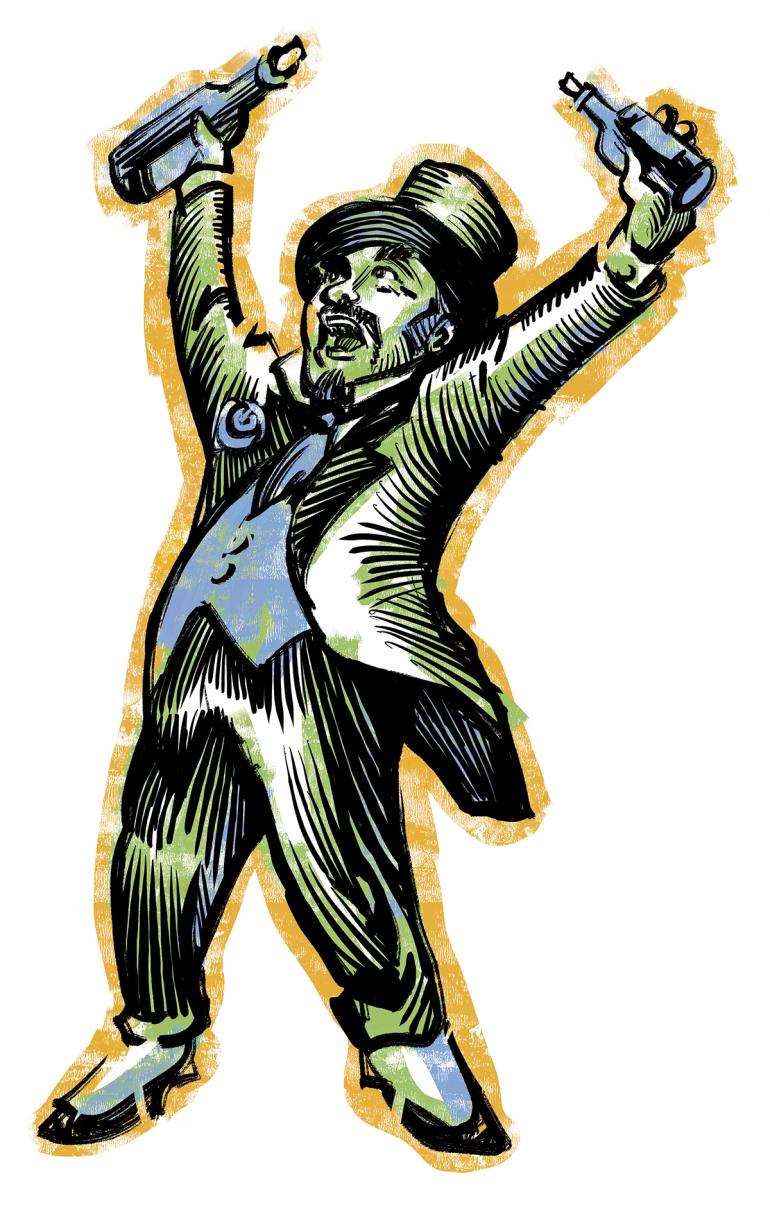Cocaine, Camphor, and Snake Oil: Panaceas of the Old West

Can anyone hear the old tales of cowboys and frontiersmen and not want to light out to join them on the trail? All of those wide-open spaces and the lure of adventure speak to our very souls as Americans, and we yearn to join them, there, in the old west of our collective memory.
But the more we look at the gritty truth of Montana's pioneering days, the more we might realize we're probably happy right when we are. Because if there's one area in particular where our present knowledge outshines that of the 19th century, it's medicine.
Woe unto to those who got sick on the early frontier!

In 1804, as the Corps of Discovery set out into one of the largest uncharted territories ever to grace a map, they did so with only a very dim view of medical science. The principal medicine they brought was "Rush's Pills," a treatment concocted by a mentor to Lewis and Clark named Dr. Benjamin Rush, one of the signers of the Declaration of Independence and Surgeon General of the Continental Army.
Their inventor's accomplishments aside, "Rush Pills" were frighteningly large pills known to the Corps as "Thunder-clappers," owing to their tendency to induce violent and almost-immediate diarrhea.
The "Thunder-clappers" may represent Montana's first panacea or so-called cure-all, a first step on the journey to something that would become synonymous with the Old West: snake-oil. And one can't mention snake oil without conjuring images of the slick, charismatic purveyors of all manner of dubious remedies claiming to cure anything that ailed you even if the cure was ultimately death.
These so-called "patent medicines" thrived during the frontier era. Part of the reason is that the tent shows, presided over by colorful and theatric charlatans, were as much entertainment as medicine. Just as today ads for pharmaceuticals are expensive and handsomely produced, airing during the most popular programs and times, the late 19th century Medicine Show was carefully designed to be as diverting and amusing as possible.
Frequently, music was sung or played, a minstrel show might perform, and there might even be one or two Native Americans if the purveyor claimed the formula to be an Indian secret. Sometimes, as depicted in Mark Twain's Huckleberry Finn, there was a plant in the crowd who was all too willing to attest to the miraculous properties of the brew.
Very often, there was a more cruel spectacle as well: snake-handlers would carry real rattlers, hold them up to the crowd, and slice them open lengthwise, dropping them into a boiling cauldron. The snake-oil purveyor would then gather the scum that boiled up to the top and deposit it into a bottle: this was rarely how the actual product was made, but the audience didn't need to know that.

Graphic by Rob Rath
And yet, despite the continuing association of the phrase with lies and what we might today call "fake news," the origins of snake oil go back to a surprising and legitimate source. Chinese laborers applied a derivation of the Chinese water snake to their inflamed and sore joints after a day of hard work and claimed that it produced immediate and effective relief.
 Gradually, a few Anglo workers were let in on the secret. Before long, word of the miraculous snake oil cure spread, and demand for the product skyrocketed. A study performed in the 1980s showed that this original form of snake oil was rich in both omega-3 fatty acids and eicosapentaenoic acid, which indeed both reduce inflammation.
Gradually, a few Anglo workers were let in on the secret. Before long, word of the miraculous snake oil cure spread, and demand for the product skyrocketed. A study performed in the 1980s showed that this original form of snake oil was rich in both omega-3 fatty acids and eicosapentaenoic acid, which indeed both reduce inflammation.
But if there were any actual snake oil in the snake oil, it was almost always rattlesnake oil, which had no particular medicinal qualities. Much later, in 1917, the Federal Government seized a shipment of a famous variety called "Stanley's Snake Oil" and tested it. They found that it contained no snake whatsoever, only an odd concoction then-called "mineral oil," thought to be composed of beef fat, pepper, and turpentine.
Many snake oils contained lead, mercury, or arsenic, and sometimes all three. Others had mustard oil, pine oil, oil of wintergreen, camphor, or petroleum. It is safe to conclude that they probably all were very foul-tasting. Even so, their abiding success could not be entirely attributed to the charm of their pitchmen: many also contained opium or laudanum, cocaine, or staggering amounts of grain alcohol.
Most patent medicines or snake oils were profoundly addictive, and any benefit they may (however unlikely) have wrought were trivial compared to the perils of the narcotic addictions that accompanied their use. For this reason, it may not be surprising that some of the earliest opponents of snake oils were the goodly and pious ladies of local temperance societies.
The death of snake oil was sealed by a Collier's article of 1905, which decried patent medicines as so much poison and lies. In 1906, the Pure Food and Drug Act prohibited selling one thing and labeling it as another, which was the bread and butter of the entire snake-oil industry. Soon, products had to change their names and think up new and ever-more tortured phraseology on their labels - Indian oil might replace snake oil, as surely no one would think it would contain the oil of an Indian. Many were reduced to labeling their packages with "formerly sold as rattlesnake oil," which did little to improve these dubious concoctions' reputations. They were also forced to fess up to their addictive ingredients. To this, at least, they happily complied; for some, the warning label prominently listing the narcotic ingredients became the product's most significant selling point.
 But by 1927, "snake oil" was enough of a byword for bad medicine and false advertising that American poet Stephen Vincent Benet wrote, in his epic "John Brown's Body," that such traveling snake oil salesmen were "...crooked creatures of a thousand dubious trades." Cinema and television helped drive the point home: the snake-oil salesman is a familiar character to anyone who has ever seen a Western. Today, the phrase is used just as often as before, if not more so: we're guessing that during that last election, you may have heard more than a few ads claiming one or another candidate plied their trade in snake-oil.
But by 1927, "snake oil" was enough of a byword for bad medicine and false advertising that American poet Stephen Vincent Benet wrote, in his epic "John Brown's Body," that such traveling snake oil salesmen were "...crooked creatures of a thousand dubious trades." Cinema and television helped drive the point home: the snake-oil salesman is a familiar character to anyone who has ever seen a Western. Today, the phrase is used just as often as before, if not more so: we're guessing that during that last election, you may have heard more than a few ads claiming one or another candidate plied their trade in snake-oil.
It's a lesson we still might learn every time someone comes along and promises too much for too little; if something claims to be able to solve all your problems at once, for one low, low fee, well, you might just examine that claim with a healthy dose of skepticism.












Leave a Comment Here